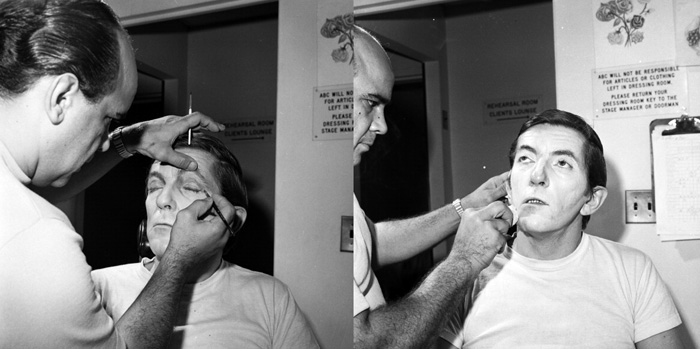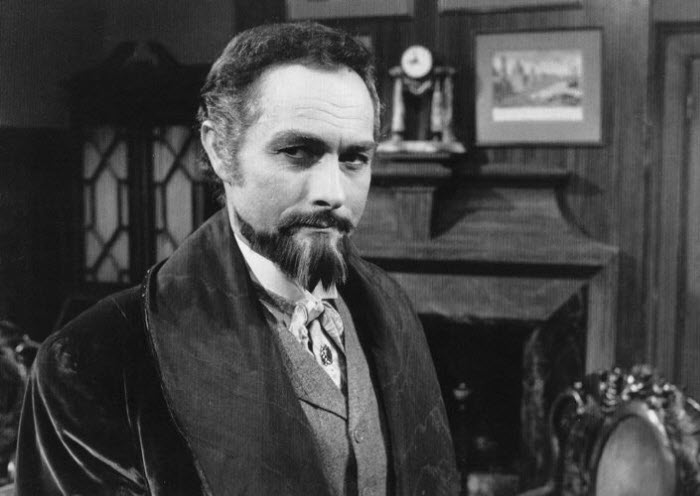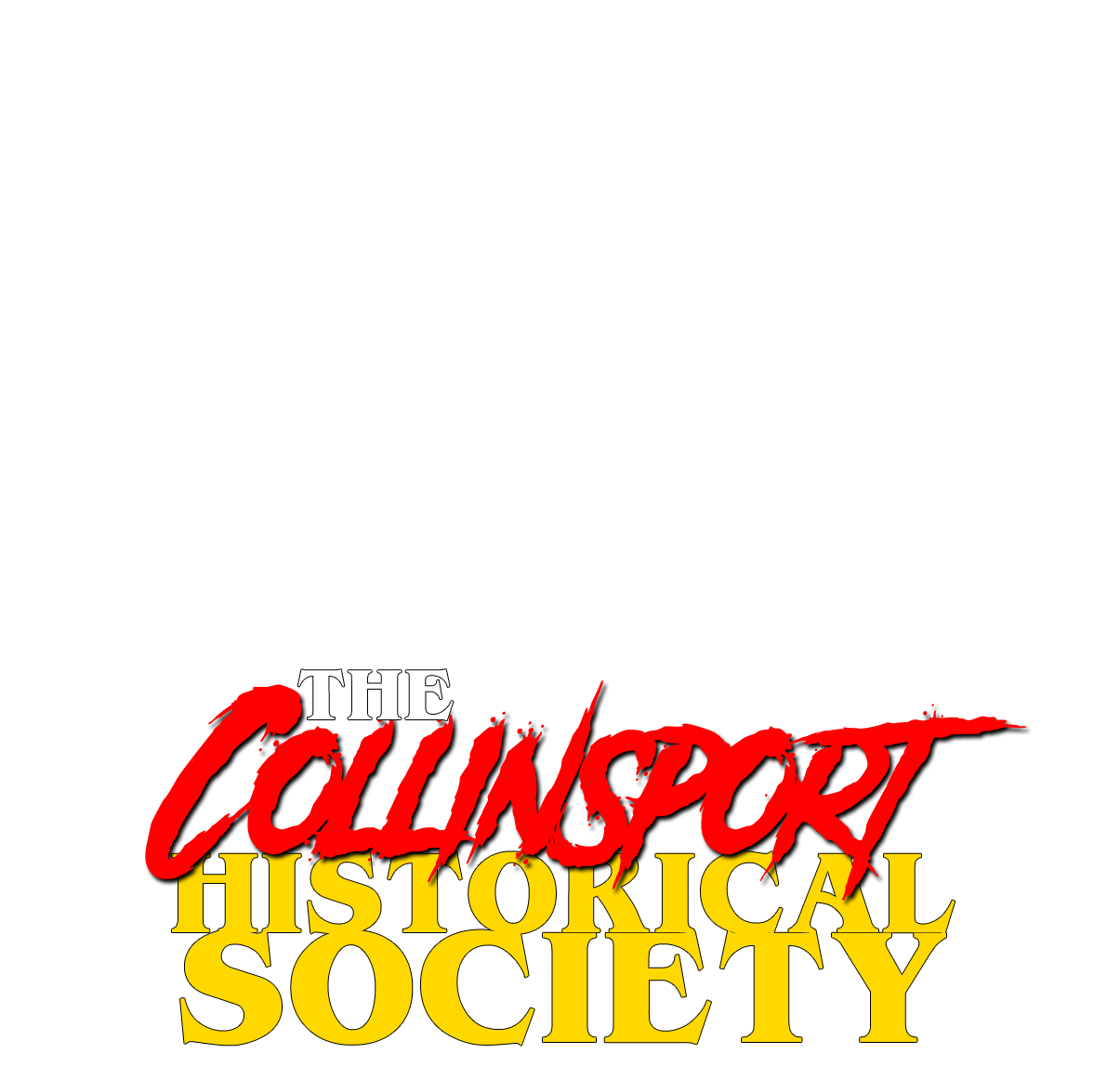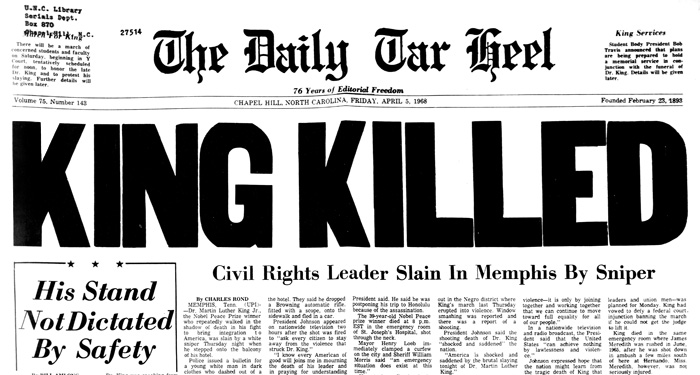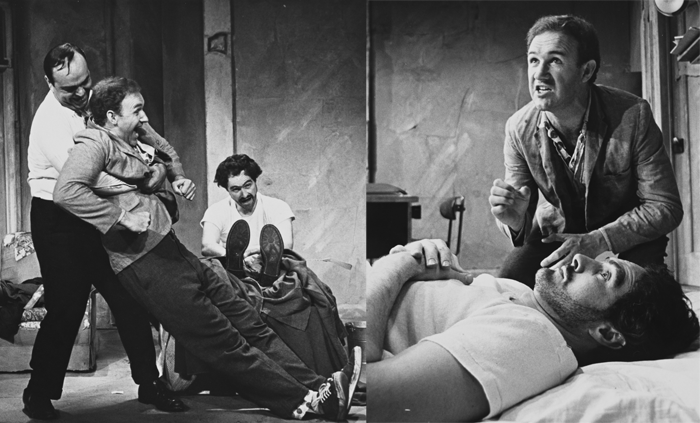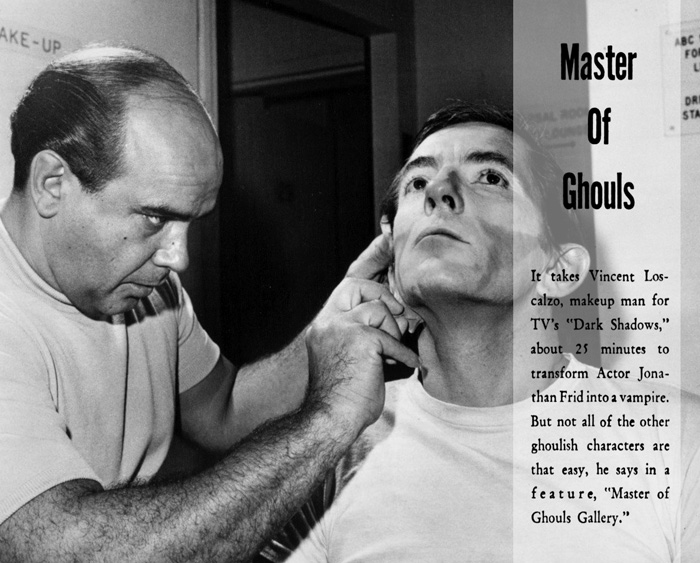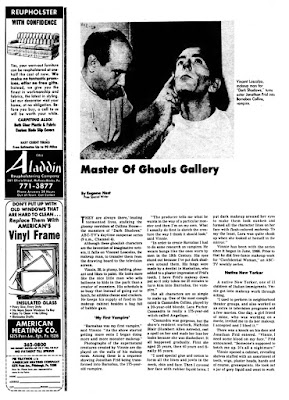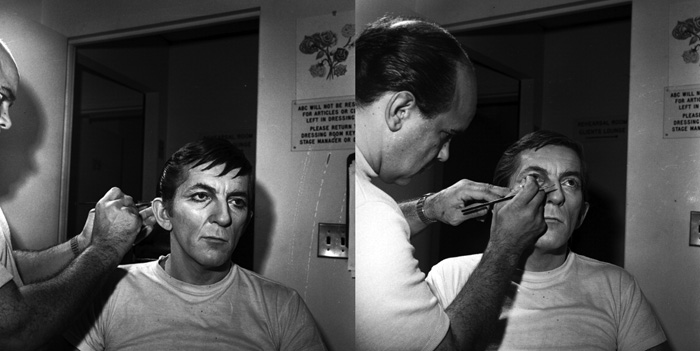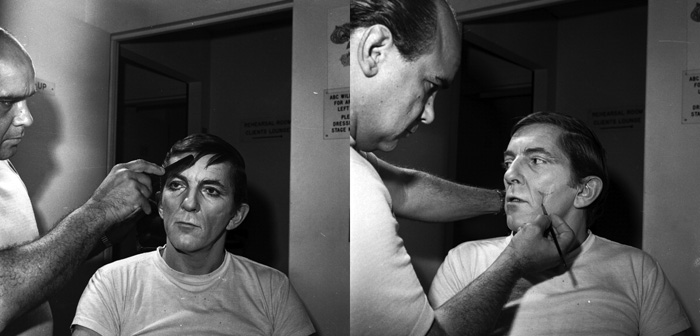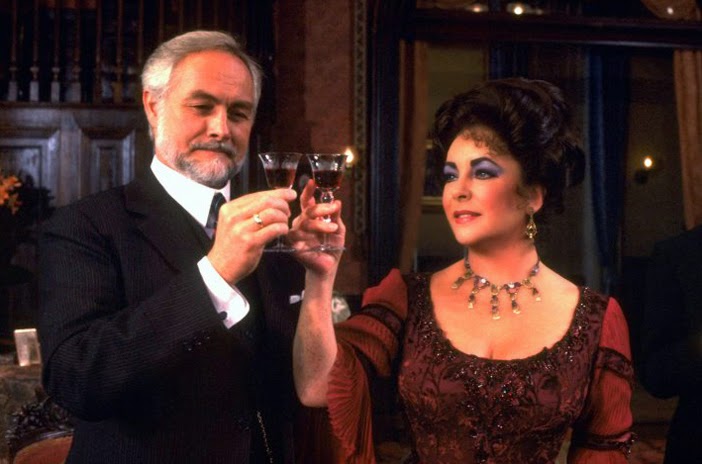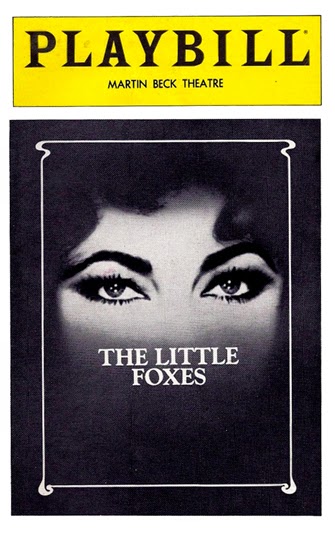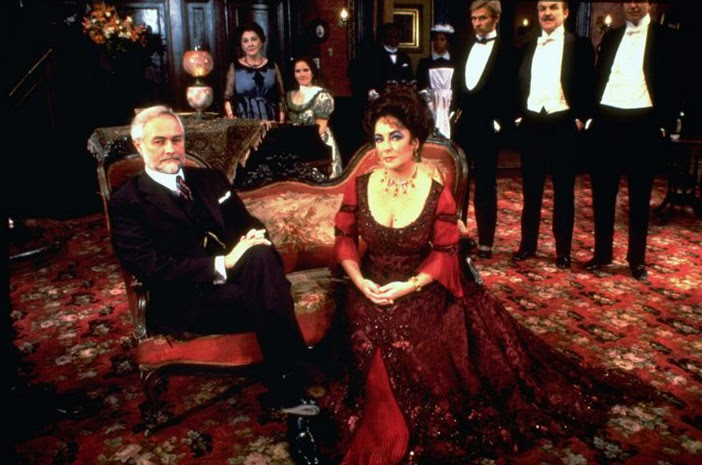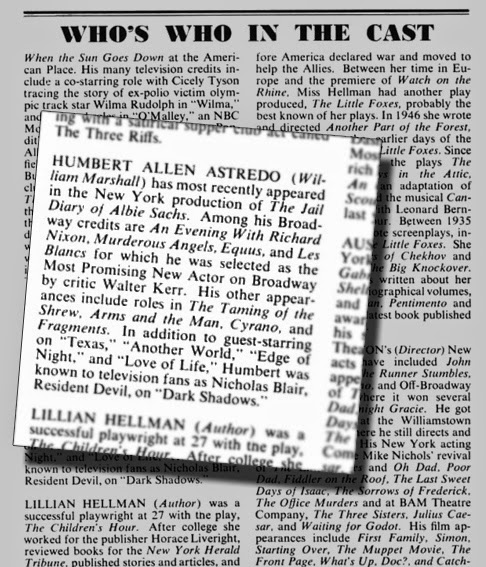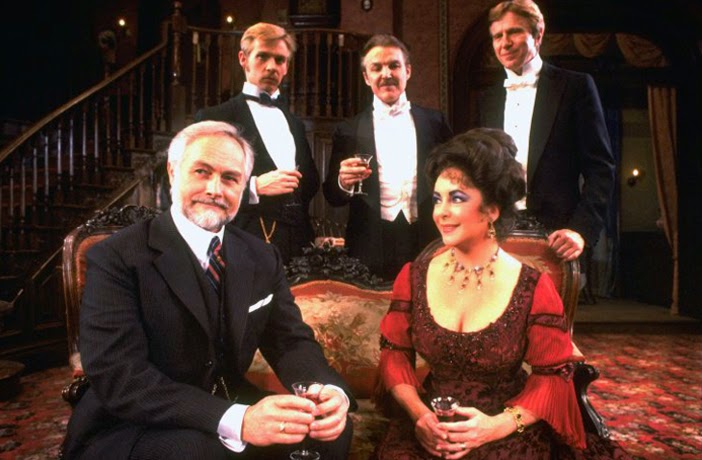For about two years, DARK SHADOWS was the hottest program on television … which is no small accomplishment for a show that aired at a time of day when most people were otherwise occupied. Because of this scheduling, soaps have traditionally been a safe place for actors to learn how to work in front of a camera, gain valuable experience and pay their bills. Very few people ever become celebrities while working on a soap, but between 1968 and 1969 almost
everybody involved with DARK SHADOWS got their 15 minutes of fame.
Case in point: This 1968 interview with the show's make-up artist,
Vincent Loscalzo. Part of being a make-up artist is having your work routinely taken for granted. When you do your job well, nobody should know you've done anything at all ... which makes a make-up artist one of the most valuable people on a set, as well as one of the most invisible.
Below is a syndicated newspaper interview with Loscalzo as it was presented in The Pittsburgh Press Sun. I've seen more truncated versions of the interview, all of which were probably tailored in some way to fit the needs of their readers. This is the longest version I could find and includes a startling revelation: DARK SHADOWS aired at 9 a.m. in this newspaper's market at the time of publication. Also, the apocryphal "Collins House," the original name for Collinwood during the pre-production of the show, was still being bandied about more than two years after its debut.
The feature is titled "Master of Ghouls Gallery" for reasons I don't get. It was accompanied by only one photo of Loscalzo working with actor
Jonathan Frid, and that doesn't add up to much of a "gallery." I've included a collection of photos from the same shoot at the bottom of this post to
make up (snort) for this oversight.
Master of Ghouls Gallery
Nov. 24, 1968
By EUGENE NEST
They are always there; leading I tormented lives, stalking the gloomy corridors of Collins House—the monsters of "Dark Shadows," ABC-TV's daytime suspense series (9 a.m., Channel 4). Although these ghoulish characters are the invention of imaginative writers, it falls on
Vincent Loscalzo, the makeup man, to transfer them from the drawing board to the television screen. Vinnie, 38, is plump, balding, pleas-ant and likes to paint. He looks more like the nice little man who sells balloons to kids in the park than a creator of monsters. His schedule is so busy that instead of going out to lunch, he nibbles cheese and crackers. He keeps his supply of food in the makeup cabinet besides a bag full of bubble gum.
My First Vampire
"Barnabas was my first vampire," said Vinnie. "As the show started getting more eerie I began doing more and more monster makeup." Photographs of the supernatural creatures created by Vinnie are dis-played on the walls of his makeup room. Among these is a sequence showing Jonathan Frid being trans-formed into Barnabas, the 175-year-old vampire.
"The producer tells me what he wants in the way of a particular monster and then I'm on my own. What I usually do first is sketch the creature the way I think it should look," said Vinnie. "In order to create Barnabas I had to do some research on vampires. He wears bangs like the ones worn by men in the 18th Century. His eyes stand out because I've put dark shadows around them. His fangs were made by a dentist in Manhattan, who added to a plaster impression of Frid's teeth. I have Frid's makeup down pat so it only takes me 25 minutes to turn him into Barnabas, the vampire." Not all characters are as simple to make up. One of the most complicated is Cassandra Collins, played by a 20-year-old blonde,
Lara Parker. Cassandra is really a 175-year-old witch called Angelique.
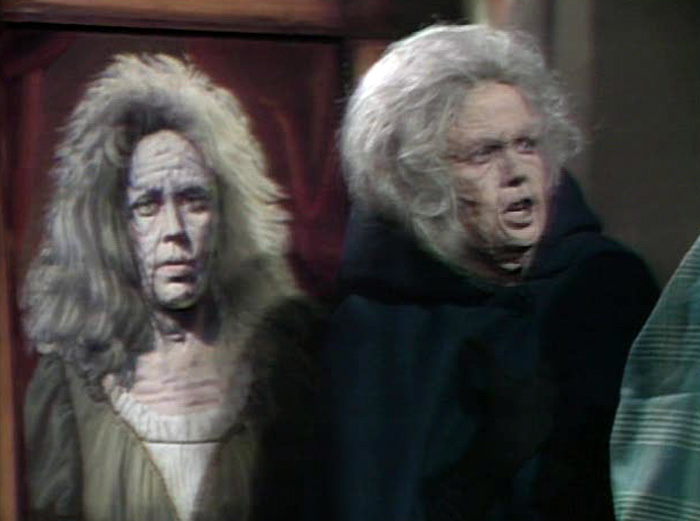 |
| Lara Parker in "hag drag," Episode 499, May 23, 1968. |
"Cassandra was gorgeous, but the show's resident warlock, Nicholas Blair (
Humbert Allen Astredo), cast a spell on her and made her lose her looks because she was disobedient. It all happened gradually. First she aged 25 years, then 40 years and finally 95 years.
"I used special glue and cotton to form all the lines and jowls in the neck, chin and face. Then I covered her face with rubber liquid latex. I put dark makeup around her eyes to make them look sunken and formed all the character lines on her face with flesh-colored makeup. To say the least, Lara was quite shook up when she looked at herself in the mirror." Vinnie has been with the series since it began in June, 1966. Prior to that he did free-lance makeup work for "Confidential Woman,' an ABC-TV weekly series.
(Note: I could find no reference to a television show called "Confidential Woman," but there was a short-lived ABC program in 1966 titled "Confidential for Women." It starred Darren McGavin and Jane Wyatt.)
Native New Yorker
A native New Yorker, one of 11 children of Italian immigrants, Vinnie got into makeup work through acting. "I used to perform in neighborhood theater groups, and also worked as an extra in television programs and a few movies. One day, a girl friend of mine, who was working on a movie, invited me to do her makeup. I accepted and I liked it."
There was a knock on his door and
Jonathan Frid entered. "Vinnie, I need some blood on my face," Frid announced. "Someone's supposed to botch me up. It's all a nightmare." Vinnie opened a cabinet, revealing shelves stuffed with an assortment of teeth, wigs, plaster heads, hands and of course, grease paints. He took out a jar of gory liquid and went to work.
